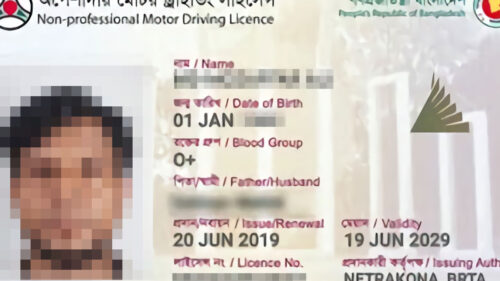
Elon Musk’s X fails bid to escape Australian fine
Elon Musk’s X fails bid to escape Australian fine Elon Musk’s X on Friday lost a legal bid to avoid a $417,000 fine levelled by

Learning full-stack web development in just 30 days is an ambitious goal that requires dedication, focus, and a structured approach. While it’s challenging to become an expert in such a short time frame, it’s possible to gain a solid foundation and understanding of key concepts. In this guide, we’ll outline a comprehensive plan for learning full-stack web development in 30 days.
Week 1: Front-end Development
Day 1-2: Introduction to Web Development
Start by understanding the basics of web development, including how the internet works, the role of browsers, and the difference between front-end and back-end development. Learn about HTML, CSS, and JavaScript, the building blocks of front-end development.
Day 3-4: HTML and CSS
Dive deeper into HTML and CSS, learning about semantic HTML, CSS selectors, the box model, and layout techniques like Flexbox and Grid. Practice by building simple static web pages.
Day 5-6: JavaScript Basics
Begin learning JavaScript fundamentals such as variables, data types, operators, control flow, and functions. Practice by building interactive elements like form validation and simple animations.
Day 7: Project Day
Work on a small front-end project, such as a personal portfolio website or a simple game, to apply what you’ve learned so far.
Week 2: Intermediate Front-end Development
Day 8-9: DOM Manipulation
Learn how to manipulate the Document Object Model (DOM) using JavaScript to create dynamic web content. Explore event handling and asynchronous programming concepts.
Day 10-11: Advanced CSS
Study advanced CSS topics like responsive design, CSS preprocessors (e.g., Sass), and CSS frameworks (e.g., Bootstrap). Practice by enhancing the styling of your projects.
Day 12-13: Responsive Web Design
Learn about responsive web design principles and techniques, including media queries and flexible layouts. Apply these concepts to make your projects mobile-friendly.
Day 14: Project Day
Work on a more complex front-end project that incorporates DOM manipulation and responsive design, such as a weather app or a to-do list with live updates.
Week 3: Back-end Development
Day 15-16: Introduction to Back-end Development
Learn about server-side programming languages (e.g., Node.js, Python, Ruby) and web servers (e.g., Express.js, Flask, Ruby on Rails). Understand the basics of APIs and how they facilitate communication between the front end and back end.
Day 17-18: Database Fundamentals
Study relational databases (e.g., MySQL, PostgreSQL) and non-relational databases (e.g., MongoDB). Learn about database design, querying, and management.
Day 19-20: Server-side Development
Start building server-side applications using your chosen programming language and framework. Focus on creating RESTful APIs and handling HTTP requests and responses.
Day 21: Project Day
Work on a back-end project, such as a simple CRUD (Create, Read, Update, Delete) application, to solidify your understanding of server-side development.
Week 4: Full-Stack Development
Day 22-23: Integrating Front-end and Back-end
Learn how to integrate your front-end and back-end code. Practice sending and receiving data between the client and server using AJAX or Fetch API.
Day 24-25: Authentication and Authorization
Study authentication (verifying user identities) and authorization (granting access rights). Implement user authentication in your projects using techniques like JWT (JSON Web Tokens) or session-based authentication.
Day 26-27: Deployment and Hosting
Learn how to deploy your web applications to a hosting provider (e.g., Heroku, AWS, Netlify) and make them accessible on the internet. Configure your domain name and set up SSL certificates for secure connections.
Day 28-29: Performance Optimization and Security
Explore techniques for optimizing your web application’s performance, such as code minification, image optimization, and caching. Learn about common security vulnerabilities (e.g., XSS, CSRF) and how to mitigate them.
Day 30: Final Project and Reflection
Work on a comprehensive full-stack project that showcases your skills and knowledge. Reflect on your learning journey, identify areas for improvement, and set goals for future learning.
Conclusion
Learning full-stack web development in 30 days is a challenging but rewarding experience. By following a structured plan, focusing on key concepts, and building projects to apply your knowledge, you can gain a solid foundation in front-end and back-end development. Remember that learning is an ongoing process, so continue to explore new technologies and best practices to enhance your skills.
You must be logged in to post a comment.
WELCOME TO SOFTDOZE.COM
Softdoze.com is a technology-focused website offering a wide range of content on software solutions, tech tutorials, and digital tools. It provides practical guides, reviews, and insights to help users optimize their use of software, improve productivity, and stay updated on the latest technological trends. The platform caters to both beginners and advanced users, delivering useful information across various tech domains.

Elon Musk’s X fails bid to escape Australian fine Elon Musk’s X on Friday lost a legal bid to avoid a $417,000 fine levelled by

Facebook, one of the original social media networks Facebook, one of the original social media networks, has become known as the platform of parents and

Bangabandhu Sheikh Mujibur Rahman Bangabandhu Sheikh Mujibur Rahman Born: March 17, 1920, Tungipara, Gopalganj, British India (now Bangladesh) Died: August 15, 1975, Dhaka, Bangladesh Role:

হারানো-নষ্ট হয়ে যাওয়া ড্রাইভিং লাইসেন্স উত্তোলন হারানো ড্রাইভিং লাইসেন্স উত্তোলন করার উপায়। আমাদের মাঝে অনেকেই আছেন যারা ড্রাইভিং লাইসেন্স হারিয়ে ফেলছেন অথবা নষ্ট করে ফেলছেন।
Submit a Comment